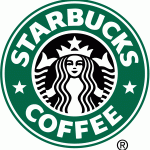A Starbucks executive recently made headlines when he explained rather openly how the Starbucks loyalty program was working.
Joe LaCugna, director of analytics and business intelligence at Starbucks, shared information that shook up bloggers, journalists, loyalty experts, and scores of Starbucks fans everywhere, when he explained that Starbucks was rewarding their “disloyal” customers more often than their best customers. The better customers, the ones buying an Grande Americano every day, were less likely to receive discounts and promotions.
While everyone was busy whining, I’m saying to myself, here’s an organization that gets it.
In the most simplistic of terms, loyalty programs generally have two base-level business objectives.
1) The ability to use rewards and other perks to increase the value of your most valuable customers.
2) The opportunity to increase the value of the other, not so loyal customers.
And that’s exactly what Starbucks is doing. Here’s my take….
Loyalty programs should, without a doubt, be used in this fashion. After all, to make non-loyal customers more loyal, you need to bring that back to your establishment more often. You need to increase the frequency of visits. Basically, you need to encourage certain behaviours.
Loyalty programs also work to perk and reward the most loyal customers. I’m fond of the Starbucks brand and am constantly earning enough stars for free items at Starbucks. In doing so, I’m also telling my friends, sharing my experiences, and spreading the good word about being loyal to the brand. So it’s clearly working this way it’s supposed to work. I’m perked based on my loyalty.
On a much more strategic level, it’s great to see a business who recognizes growth potential and the ability to build their brand by strategically focusing on building more loyal customers.
I work with a number of subscription and paywall entities and we’re constantly looking at behaviour analytics. Mainly, consumption, usage, and participation. The goal, then, is to be aware of members who are close to defecting, or on the flip side, those who share the same traits as your best customers. When we find those customers we’re able to make adjustments that match similar traits and characteristics of your best customers.
That’s exactly what Starbucks recognizes. This isn’t blanket marketing with the hope that a few more people drink $6 Caramel Macchiatos. Instead, they know exactly who has the potential to become one of their most loyal customers, it might just take a few extra shots of espresso.
I’m drinking it.
